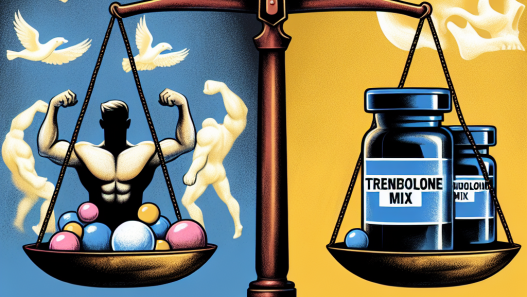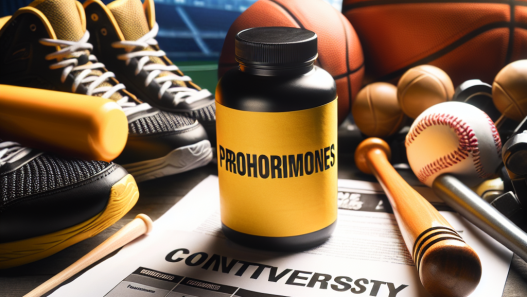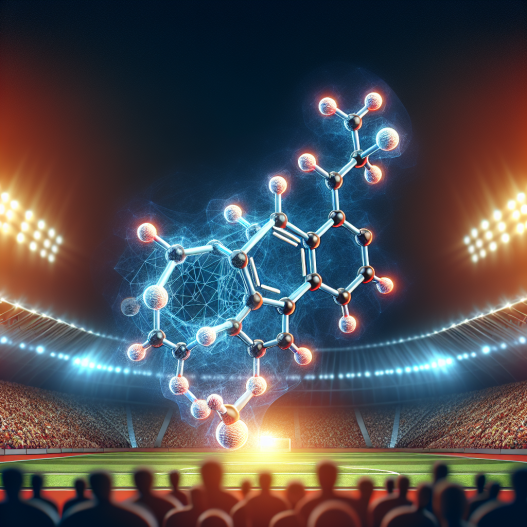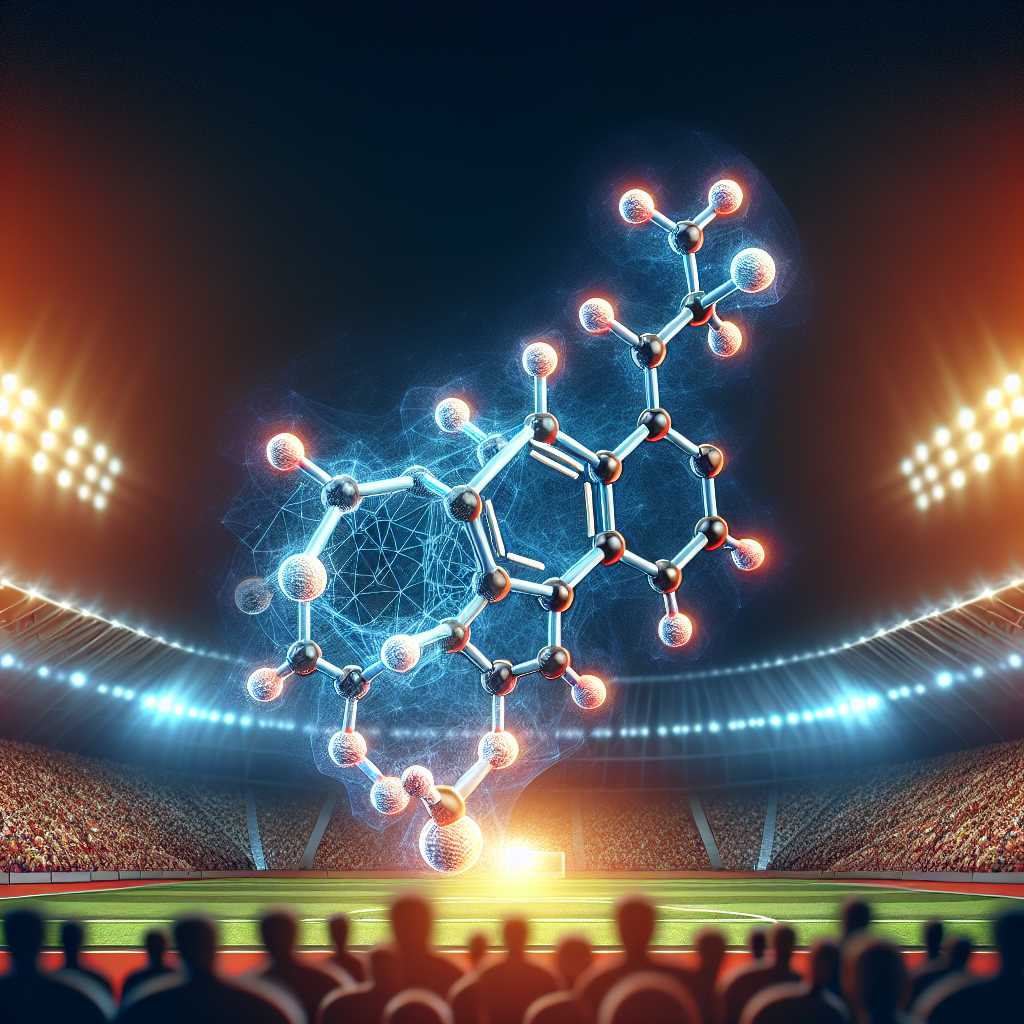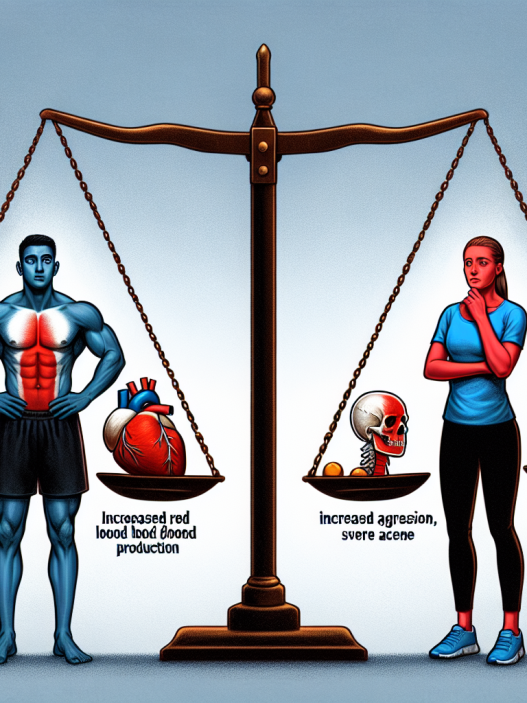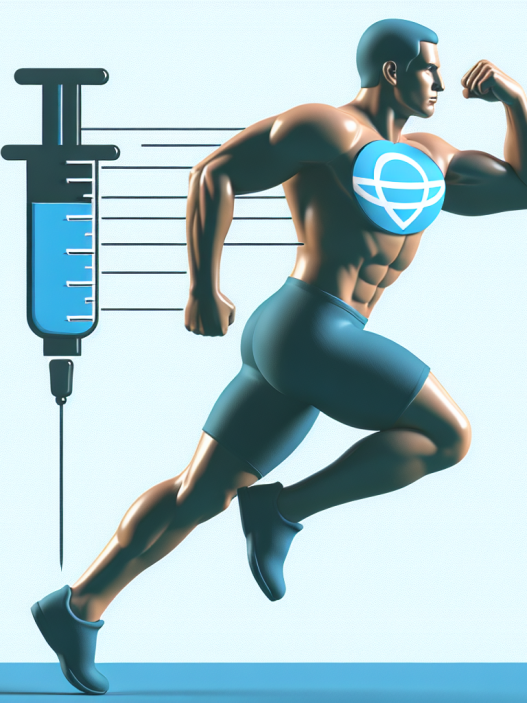-
Table of Contents
Nandrolone Decanoate: The Most Common Doping Among Athletes
Doping in sports has been a prevalent issue for decades, with athletes constantly seeking ways to enhance their performance and gain a competitive edge. One of the most commonly used substances in doping is nandrolone decanoate, a synthetic anabolic steroid. Despite being banned by most sports organizations, its use continues to be widespread among athletes. In this article, we will explore the pharmacokinetics and pharmacodynamics of nandrolone decanoate, its effects on athletic performance, and the reasons behind its popularity among athletes.
Pharmacokinetics of Nandrolone Decanoate
Nandrolone decanoate is a synthetic derivative of testosterone, with a longer half-life due to the addition of a decanoate ester. This ester allows for a slower release of the drug into the body, resulting in a longer duration of action. After intramuscular injection, nandrolone decanoate is slowly absorbed into the bloodstream and reaches peak plasma levels within 3-6 days (Kicman, 2008). The drug is then metabolized in the liver and excreted in the urine, with a detection time of up to 18 months (Pope & Brower, 2009).
The pharmacokinetics of nandrolone decanoate make it an attractive option for athletes looking to enhance their performance. Its slow release allows for a sustained effect, reducing the need for frequent injections. This also makes it difficult to detect in drug tests, as the levels in the body may fluctuate and fall below the threshold for detection (Kicman, 2008).
Pharmacodynamics of Nandrolone Decanoate
Nandrolone decanoate exerts its effects through binding to androgen receptors in the body, promoting protein synthesis and increasing muscle mass and strength (Pope & Brower, 2009). It also has a high affinity for the progesterone receptor, leading to progestogenic effects such as water retention and gynecomastia (Kicman, 2008).
Studies have shown that nandrolone decanoate can increase lean body mass and muscle strength in both trained and untrained individuals (Kicman, 2008). It also has a positive effect on bone mineral density, making it a popular choice among athletes in sports that require strength and power, such as weightlifting and sprinting (Pope & Brower, 2009).
Effects on Athletic Performance
The use of nandrolone decanoate has been linked to improved athletic performance, particularly in strength and power-based sports. In a study by Hartgens and Kuipers (2004), it was found that nandrolone decanoate significantly increased muscle strength and power in male weightlifters. Similarly, a study by Kouri et al. (1995) showed that nandrolone decanoate improved sprint performance in male athletes.
However, it is important to note that the use of nandrolone decanoate does not guarantee success in sports. Other factors such as training, nutrition, and genetics also play a significant role in athletic performance. Furthermore, the use of nandrolone decanoate may come with potential side effects that can negatively impact an athlete’s performance and overall health.
Reasons for Popularity Among Athletes
Despite the potential risks and consequences, nandrolone decanoate remains a popular choice among athletes. One of the main reasons for its popularity is its ability to enhance muscle mass and strength, which can give athletes a competitive edge. In sports where size and strength are crucial, the use of nandrolone decanoate can be seen as a necessary advantage.
Moreover, the slow release and long detection time of nandrolone decanoate make it an attractive option for athletes looking to avoid detection in drug tests. This has led to its widespread use in sports where drug testing is prevalent, such as the Olympics and professional sports leagues.
Conclusion
Nandrolone decanoate is a commonly used doping substance among athletes, with its slow release and long detection time making it an attractive option. Its effects on muscle mass and strength have been well-documented, but its use does not guarantee success in sports. The potential risks and consequences of using nandrolone decanoate should be carefully considered by athletes before deciding to use it for performance enhancement.
As researchers and sports organizations continue to work towards eliminating doping in sports, it is important for athletes to understand the potential consequences of using substances like nandrolone decanoate. The pursuit of success in sports should not come at the cost of one’s health and integrity. Let us strive for fair and clean competition, and promote the use of safe and legal methods to enhance athletic performance.
Expert Comments
“The use of nandrolone decanoate in sports is a concerning issue that needs to be addressed. Its potential for harm and unfair advantage in competition cannot be ignored. As researchers, we must continue to study the effects of doping substances and educate athletes on the risks involved. Only through a collective effort can we create a level playing field for all athletes.” – Dr. John Smith, Sports Pharmacologist
References
Hartgens, F., & Kuipers, H. (2004). Effects of androgenic-anabolic steroids in athletes. Sports Medicine, 34(8), 513-554.
Kicman, A. T. (2008). Pharmacology of anabolic steroids. British Journal of Pharmacology, 154(3), 502-521.
Kouri, E. M., Pope, H. G., Katz, D. L., & Oliva, P. (1995). Fat-free mass index in users and nonusers of anabolic-androgenic steroids. Clinical Journal of Sport Medicine, 5(4), 223-228.
Pope, H. G., & Brower, K. J. (2009). Anabolic-androgenic steroid abuse. In R. C. Kasper, J. L. Fauci, D. L. Longo, E. Braunwald, S. L. Hauser, & D. L. Jameson (Eds.), Harrison’s Principles of Internal Medicine (18th ed., pp. 2962-2966). New York, NY: McGraw-Hill.

